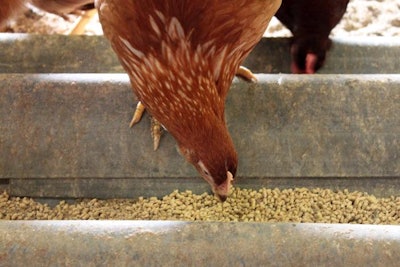
There is plethora of alternative feed ingredients that could be used in layer diets, but lack of knowledge often causes an opportunity to be lost. Layers are considered mature birds, at least in terms of digestive development, and given the fact they are omnivore birds, they can consume almost all possible ingredients.
In addition, all laying hens are limit-fed to ensure they don’t get overweight. This means their daily feed intake is always below their potential maximal ingestion capacity, which allows for a slight increase in feed intake if their feed is less nutrient dense — something that happens when non-traditional ingredients are used. So, what does it take to use alternative ingredients in layer feeds?
- Reliable chemical/nutrient composition
The two most important nutrients here are protein and fiber as these values are affected by the method employed to produce alternative ingredients that are often agro-industrial by-products. As an example: what one might consider as a typical cottonseed meal product can actually be a cottonseed cake meal product; very similar names, but two different products.
- Understanding of major anti-nutritional factors
Soybeans are not the only ingredient full of anti-nutritional factors. Alternative protein sources may have a different array of anti-nutritional factors or very different levels of the same factors that we largely ignore in soybean meal. Cottonseed meal, for example, may result in hens laying eggs with a greenish yolk, unless some specific measures are taken during formulation.
- Combining alternative ingredients with caution
Let us assume that our example ingredient used so far, cottonseed meal, can be added up to 10 pecent in a late-phase diet, based on book values. Is this still true if the same formula also contains rapeseed meal? Or, should we lower this 10 percent because rapeseed meal is also rich in anti-nutritional factors? This is a difficult question, even for most experienced nutritionists.
- Keeping an eye on hens is crucial
A different daily feed intake allowance is always required if the feed energy level has changed. Or, feeders might need adjustment if feed volume has changed. Either way, an eye should be kept on hens, in terms of health and productivity, for the first week or so to ensure they consume enough feed and nutrients to sustain productivity, and so they don’t suffer from exposure to anti-nutritional factors that have been underestimated.

















